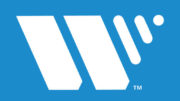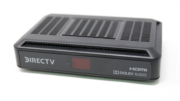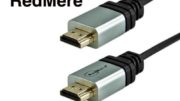New DIRECTV customers already know this, but if you’ve had DIRECTV for a while, you might not: the default installation for new customers is wireless. If the customer doesn’t want or need 4K, the tech will use wireless clients instead of running cabling. We’ll soon see a wireless 4K client from DIRECTV as well (it’s sort of a badly-kept secret). So, pretty much all installs will be wireless unless the customer specifically wants or needs wires.
So how’s that going to work out?
I think of it this way: a while back, you probably got Wi-Fi for the first time. You got one router and you put it somewhere out of the way because it’s ugly. And then you realized that you couldn’t get Wi-Fi throughout the whole house. If you’re like me and millions of others, you probably ended up getting a mesh system and putting little hotspots all over the house.
This makes people wonder how DIRECTV can promise a fully wireless system based on one Genie server that might be in a cabinet or something.
Here are the guidelines
DIRECTV says, there can be a maximum of 80 feet and five interior walls between the Genie Mini Client and the Genie 2 tower. This is generally better performance than you’ll get from regular Wi-Fi, for two reasons. First, DIRECTV’s wireless network doesn’t have anything else on it but DIRECTV products so there isn’t as much cross traffic. Second, believe it or not, HD video doesn’t take up a lot of bandwidth so it’s not like you really need super high speed. 15 megabits per second is just fine.
If you need more range, you can run a cable to a Wireless Video Bridge. This device acts like a hotspot which lets you then extend your wireless range another 80 feet. So, with enough wireless video bridges, you can cover a very large area. Of course, the Wireless Video Bridge, despite its name, does require a cable to go into it.
A few provisos
Of course there are some things you need to know. You’ll need to consider the composition of your walls, and the things inside the walls. If you have flex conduit in the walls, that will limit the range. A large number of wires in the walls will limit it as well. Ducting, appliances and decorative brick can diminish the range even more.
If you’re not sure whether or not you’ll be able to get wireless clients where you want to put them, unfortunately there’s really only one good solution. If you try to activate a wireless client and it doesn’t work for you, it’s very hard to “un-activate.” You’re better off getting a DIRECTV tech to come out to the house. They have proprietary tools that we’re not allowed to sell at Solid Signal. These tools can help them figure out if a location will work for wireless, before activating a client. It’s worth the time.
When you’re ready to move forward, call the experts at Solid Signal! We’re here for you at 888-233-7563 during East Coast business hours. There’s no need to go to an overseas call center. We have experts in our Detroit-area office who can help. Call now! If it’s after hours, it’s just as easy… just fill in the form below.





